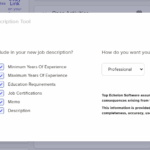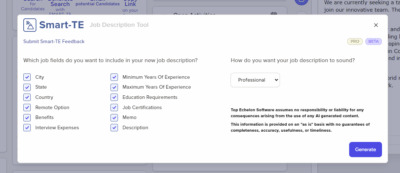You work hard to attract and recruit the brightest talent for your company. It can be difficult to learn that one-third of new hires quit their jobs after just six months, or that the average American worker today stays in their position for 4.2 years.
Combine that with the news that 91 percent of millennials (who now constitute the majority of the workforce), only plan to stay with an organization for three years, and the fact that it costs anywhere from $16,000 to $120,000 to replace an employee, it’s not surprising that companies are looking for better ways to retain their talent.
One of the best ways to make a great impression on a new employee after they’ve accepted their job is to make their onboarding experience exceptional. The traditional process suggests that onboarding begins on an employee’s first day, but it really begins the moment they accept their offer, and it should last for over 90 days.
Let’s take a look at what that entails. Here are seven steps that should be part of your onboarding process:
1. Prepare
Don’t wait until an employee’s first day to start acclimating them to their new team. Send any new hire paperwork in advance so they don’t have to spend hours of their first morning completing boring forms. Make sure that their manager has a 30-60-90-day plan ready, along with the expectations of what should be accomplished and which projects and tasks the new employee will work on immediately. Have their schedule set for the first few days so they feel productive right away. Also, have their email account and any other communication tools set up, and have their office or desk space cleaned and prepared.
2. Provide backstory
Get your new hire up to speed on what has been going on within your organization. Provide them with a basic history of your recruiting niche and clients, the considerations you took into account while choosing your software, why decisions were made along the way, and who the key leaders were in the past. In other words, explain how your company became what it is today. This will provide an important backdrop that colors their perception of company culture and values.
3. Plan a one-on-one
Everyone is busy, and Mondays (when most people start a new job) are always hectic. That doesn’t matter; your new hire is a huge priority, and they need to feel like it. Make sure you schedule a lunch or one-on-one meeting between the new employee and their manager their first day. It’s critical that they establish early rapport.
4. Meet the team
Have your new employee meet their team as soon as possible so they can make connections. People are less likely to ask questions and seek out information when they don’t feel a connection to their teammates. Encourage them to bother their new team with lots of questions. Consider asking employees to connect with your new hire over social media or email before their first day. If your company has a mentoring program, try assigning one immediately.
5. Do routine check-ups
Establish routine checkpoints and remind yourself to ask how new hires are doing. Review their progress, their concerns, and next steps, and make sure they’re comfortable and thriving. Consider doing this on day one, day three, at the end of week one, at the end of week two, and at the end of 30, 60, and 90 days.
6. Less indoctrinating, more authenticity
Try not to indoctrinate your new employee into your culture so they feel forced to embody your values. Let people be themselves at their best and be comfortable. When employees feel like they have to set a false pretense at work, they won’t likely want to stay for long.
7. Encourage their perspective
People want to feel valued, and new employees have plenty to offer, regardless of the fact that they just got there. They have fresh, new ideas and are able to contribute right away. Be sure your culture is one that celebrates diversity of thought. After an employee’s first 90 days of employment, ask them for feedback about their onboarding process. Find out what they feel went well, and what could be improved. Be open to continually changing your onboarding process based upon the feedback you receive.
Remember that the most critical aspect to a successful onboarding process is focusing on the experience of the new hire. Don’t be afraid to assign responsibilities, ask for input, and engage them with the team immediately.
Jessica Barrett Halcom is a contributor for TechnologyAdvice, with specializations in recruiting, learning management system and performance management software. She holds a bachelor’s degree from the University of Wisconsin, Green Bay and currently lives in Nashville, TN.








